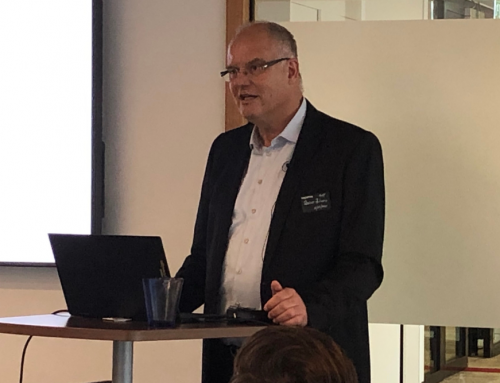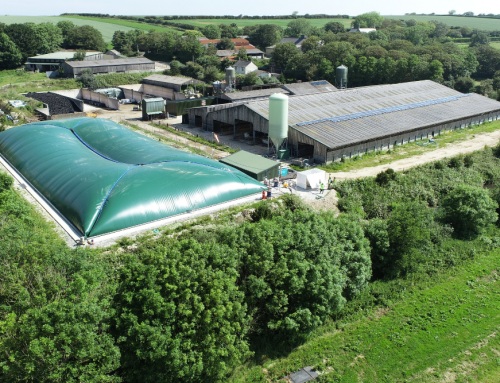Cloud ERP: Where are we headed?
With so many businesses looking seriously at cloud ERP as a result of the pandemic, it seems like a good time to take stock of the cloud ERP landscape.
Many businesses have struggled to get access to their data, either because they are using outdated on-premise legacy systems or because they are still using paper and spreadsheets.
The good news is that many small and medium sized businesses who saw the need to move rapidly to the cloud, were able to do so using light, out of the box ERP solutions and remote implementation methods.
Before we dig into the current outlook and future trends for cloud ERP technology, let’s first check in with a wider development that’s going to impact many businesses in the near future – the development of the outcome economy.
The Outcome Economy
This is the name used to describe the shift to selling products and services based on measurable outcomes.
It has come about because of a revolution in technology such as sensors, big data, cloud computing, analytics and the Internet of Things (IoT) which allows companies to collect and analyze huge volumes of data on how their services and products perform. This in turn enables them to gather significant insight, allowing them to guarantee certain results to their customers.
Talk to any futurist and the opinion is pretty clear, that the outcome economy is where we are all heading. That means marketing, pricing and selling goods based on outcomes rather than on the items face value. Things will increasingly be offered as a service rather than buying the thing outright.
That covers light bulbs – where we won’t buy bulbs, just the light they produce – cars where our continued transportation needs are the outcome rather than the car and of course Cloud ERP. It is the equivalent of selling holes in the wall and not the drills that make them! Rolls Royce already do it with jet engines and agricultural machinery sales are now being linked to yield per acre.
It will require new platforms, new intelligent connected technologies and new partnerships to make this happen. But Cloud ERP is certainly part of the mechanism that will deliver these developments.
(N.B. The technological changes required to deliver the outcome economy is sometimes known as digital transformation – this is just another way of explaining it. See our library of digital transformation articles here)
And of course ERP technology is in itself delivered as a service – via the cloud – making it the perfect example of a virtualised outcome based product.
Current Outlook and Future Trends for Cloud ERP
More ERP Users Will Switch to Cloud
Cloud ERP is the trend that is here to stay. According to Cheshire media, the cloud ERP Market will experience exponential growth during 2020-2027
Companies using on-premises ERP are realizing its limitations, for example; inflexibility, inability to scale, and lack of innovation. It therefore seems probable that cloud ERP is going to play a vital role in improving the situation.
Cloud ERP usually costs less upfront, because it is charged on a monthly subscription model rather than purchased outright and maintained on site. Cloud ERP also gives companies access to their business-critical applications at any time from any location which are strong selling points.
Continuing the Rise of Intelligent Technology
The intelligent enterprise is a concept that has been with us for a while now and refers to a strategy for enabling the rapid transformation of data into insight. The intelligent enterprise leverages emerging technologies such as artificial intelligence (AI), machine learning (ML), IoT (Internet of Things) and analytics.
According to SAP’s Rainer Zinow, tech companies are doing their best work where these advancements are being embedded into cloud ERP solutions and used to do very specific and useful things.
For example, much progress has been made in the area of image recognition. Users of SAP Business ByDesign already benefit from automated supplier invoice recognition which saves a lot of time.
Watch Rainer Zinow explain the SAP Business ByDesign roadmap for 2021 here.
Powerful Analytics
Analytics continues to be a hot topic in the world of cloud ERP, with both embedded and add on analytics options available.
In fact, according to Rainer Zinow at SAP, systems are being upgraded in the background to pave the way for a range of predictive analytics capabilities. The latest one allows you to predict how likely you are to close an opportunity within the marketing and sales module. Many more such scenarios are being developed and rolled out to customers in SAP Business ByDesign case by case.
Collaboration and Integration
During the pandemic the Cloud ERP market was one of the industries that were able to push past the market turbulence. The reason for this was the obvious benefit of teams being able to access live data from home. This ability to facilitate collaboration has taken yet another leap forward in SAP Business ByDesign where a dedicated integration has been developed between ByD and Microsoft Teams.
The integration pulls live business information from Business ByDesign into Teams so you can collaborate and share. A perfect blend that will shortly be rolled out to all users.
You can see more about future plans for SAP Cloud ERP systems here.
Mobile Apps
Mobile apps will continue to be important as more and more users seek to carry out tasks on the go. A whole range of industry specific tools can be accessed via mobile app and purchased as add ons in places like the SAP App Store – depending on which Cloud ERP system you have chosen.
Visual
Modern cloud ERP systems have clear, user-friendly menus with attractive dashboards, icons, graphs and overviews. This is vital to persuade the next generation of cloud ERP users to get on board. Everyone now wants the same standard of usability and desirability from their home based and work based technology.
Hyper Niche and Add Ons
In 2021 we can also expect to see more and more hyper-niche ERP. Not only will we see Cloud ERP editions that address the needs of specific industries (both product centric industries and professional services) – but things will get even more granular, with a host of add-ons allowing users to do specific tasks, like fill out Intrastat declarations.
For example InCloud Solutions has developed a ByDesign based solution for the hospitality industry called In Cloud Express Financials for Hospitality and also an app which can handle thousands of complex royalty payments called Royalty Management for Business ByDesign
Conclusion
So, as a technology that delivers on current business needs, the outlook for Cloud ERP is that it is here to stay. Future trends will continue to reflect both the range of technological developments available and the most beneficial ways they can be deployed – otherwise what is the point?
The outcome will be a wide range of user-friendly cloud ERP systems for every type of business and industry with many apps and add-ons to choose from.
The winners will be the business customers who choose to run their companies this way – basing their business decision on the latest real time information and insights wherever they happen to be.










Leave A Comment